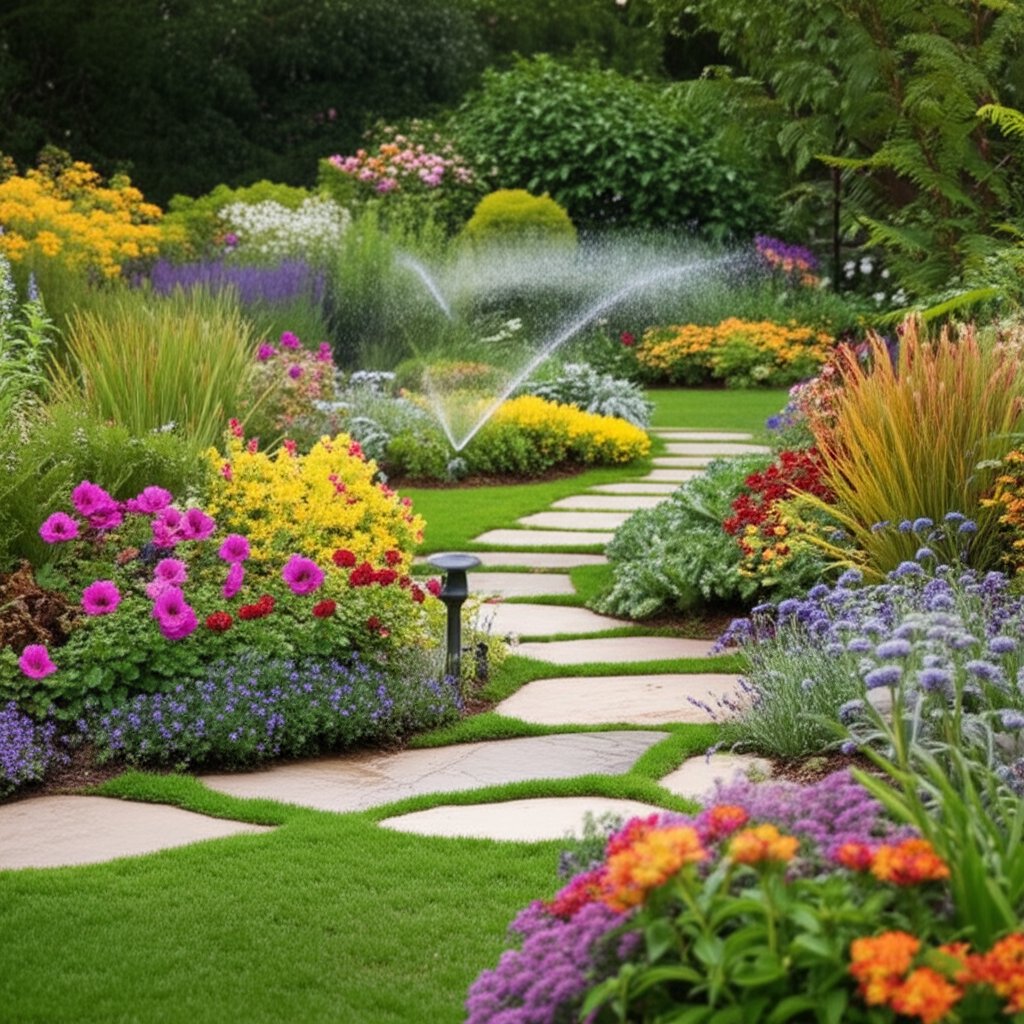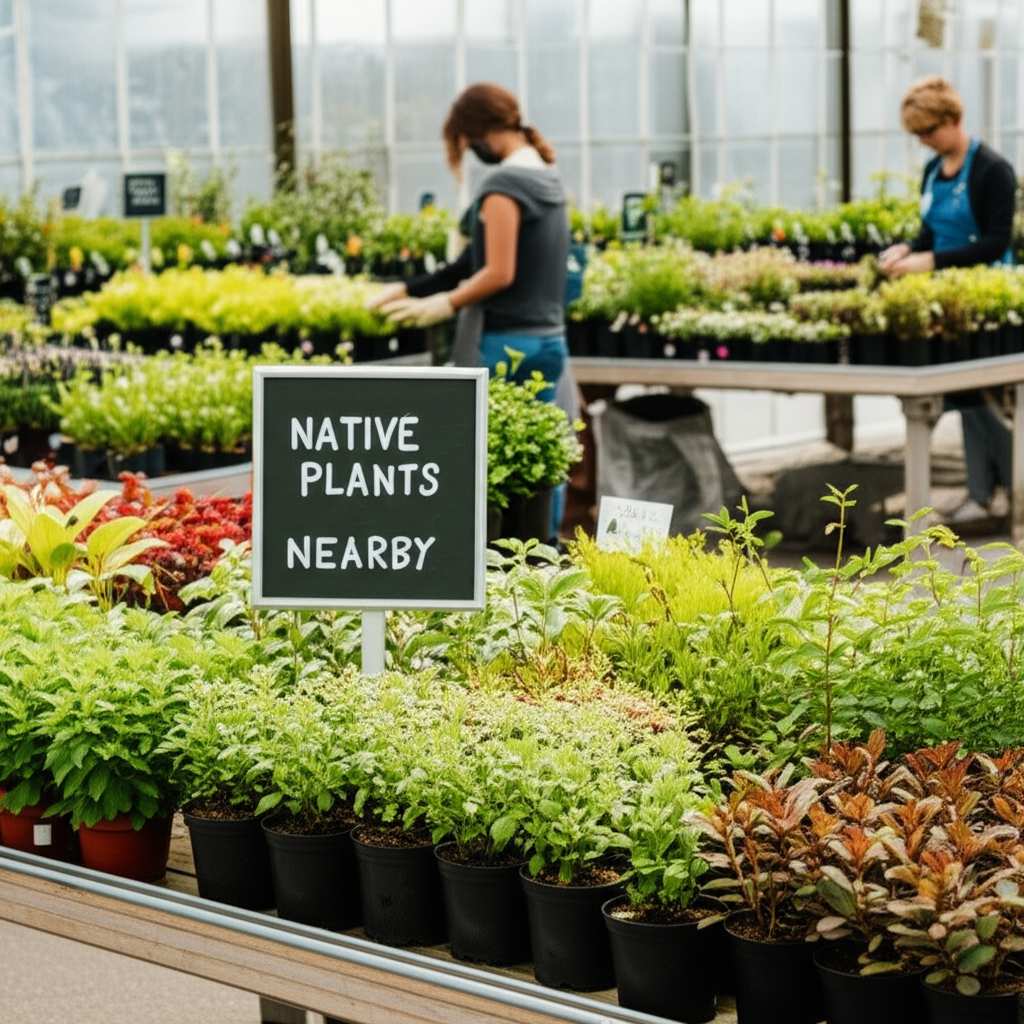2025 Garden Trends: Sustainable Ideas to Transform Yards
Gardens are changing. Homeowners are looking for ways to make outdoor spaces healthier, easier to maintain, and better for the environment. Sustainability is now at the heart of garden design. This means less waste, smarter use of resources, and planting that supports both people and nature. If you are planning to update your yard, the newest garden trends offer plenty of inspiration. With a focus on eco-friendly choices, you can create a space that looks good, costs less to maintain, and lasts for years.
Native Plant Landscaping
One of the strongest shifts in gardening is the move toward native plants. These are plants that naturally grow in your region without extra care. They are built for local soil, rainfall, and climate. Once established, they often need little to no watering or fertilizer compared to non-native plants.
Benefits of native plants:
- Lower water bills since they thrive on natural rainfall
- Less need for chemical fertilizers or pesticides
- Attracts pollinators like bees, butterflies, and hummingbirds
- Provides food and shelter for local wildlife
Costs for native plants can be similar to traditional garden center options, usually ranging from a few dollars for small starters to $20 or more for larger shrubs. The bigger savings come later in reduced maintenance. If you want a landscape that blends naturally with your surroundings, native plants are a smart choice.
Water-Smart Gardening
Water use has become a major concern for homeowners. Drought-resistant gardening is now more common, even in regions that do not usually face water shortages. The goal is to design a yard that looks green and colorful without wasting water.
Ways to reduce water use:
- Install drip irrigation systems that deliver water directly to roots
- Use mulch around plants to keep soil moist and reduce evaporation
- Group plants with similar water needs together
- Collect rainwater in barrels for use during dry weeks
Drip irrigation kits start around $30 and can be installed in a weekend. Rain barrels range from $50 to $200 depending on size and design. While there is an upfront cost, these systems can cut water use by half, saving money and reducing strain on local water supplies.
Edible Landscapes
More homeowners are turning their yards into food-producing spaces. Edible landscaping blends beauty and function by mixing herbs, fruits, and vegetables into traditional garden beds. Instead of planting only flowers, you can grow a mix of plants that look attractive and provide something to harvest.
Examples of edible landscaping:
- Blueberry bushes used as borders
- Tomato plants mixed with marigolds
- Herbs like rosemary as hedges
- Fruit trees that double as shade trees
Costs depend on plant choices. A fruit tree can cost $25 to $75, while herb starters are only a few dollars each. Maintenance involves regular pruning and harvesting, but the reward is fresh food from your own backyard. This trend also reduces trips to the grocery store and lowers food waste.
Pollinator-Friendly Gardens
Pollinators are essential for healthy ecosystems, and many gardeners are creating spaces that support them. A pollinator-friendly garden is filled with plants that provide nectar and pollen throughout the growing season.
Tips for creating a pollinator garden:
- Plant flowers that bloom at different times of year
- Avoid pesticides that harm bees and butterflies
- Include milkweed for monarch butterflies
- Add shallow water sources like birdbaths with stones
Costs for pollinator plants are usually low, especially if you buy seed mixes that cover large areas for under $20. The payoff is a buzzing, lively garden that helps keep local ecosystems strong. It also adds color and movement to your yard all year.
Low-Maintenance Lawns
Traditional lawns require mowing, watering, and fertilizing. Many homeowners are starting to replace large lawns with ground covers, clover, or native grasses that need less attention. Some even cut lawns down to small sections surrounded by shrubs and beds.
Alternatives to traditional lawns:
- Microclover, which stays green with little watering
- Native grasses that thrive without fertilizer
- Creeping thyme or sedum for sunny spots
- Moss for shaded areas
The cost of replacing a lawn varies. Microclover seed runs about $10 to $15 per pound, and one pound can cover up to 1,000 square feet. While lawn alternatives may take time to establish, they save hours of mowing and reduce fuel or energy use.
Natural Hardscaping Materials
Hardscaping is any non-plant element like patios, walkways, or retaining walls. The new trend is using natural and recycled materials that blend with the environment. Instead of concrete or synthetic products, homeowners are choosing stone, reclaimed wood, and gravel.
Popular sustainable hardscape materials:
- Reclaimed brick or pavers
- Local stone for patios and walls
- Gravel paths that allow rainwater to filter into the soil
- Recycled composite decking
Costs vary widely. Gravel paths can be installed for a few hundred dollars, while natural stone patios can cost several thousand. The value comes from durability and the natural look that fits with sustainable landscapes.
Vertical and Small-Space Gardening
Not every yard has room for large beds or orchards. Vertical gardening uses walls, fences, and trellises to grow upward. This makes it possible to garden in small spaces like patios, balconies, or narrow side yards.
Ideas for vertical gardens:
- Wall-mounted planters filled with herbs
- Trellises for climbing beans or cucumbers
- Hanging baskets with strawberries
- Living walls with a mix of flowers and greenery
Vertical garden kits range from $30 to $200 depending on size and material. They are easy to install and can be adapted to almost any outdoor space. This trend is especially useful for urban homeowners with limited yard space.
Composting and Soil Health
Healthy soil is the foundation of a good garden. Composting has become a central part of sustainable gardening. By reusing kitchen scraps and yard waste, you create nutrient-rich soil that reduces the need for chemical fertilizers.
Composting basics:
- Use a bin or pile to hold food scraps, leaves, and grass clippings
- Keep the material moist and turn it every few weeks
- Finished compost looks dark and crumbly and can be mixed into garden soil
Compost bins start at around $50, though you can also build your own with wood pallets or wire. Once you begin composting, you reduce household waste and improve plant health at no extra cost.
Smart Technology for Gardens
Technology is also being used to make gardens more efficient. Smart irrigation systems monitor soil moisture and weather forecasts to water only when needed. Solar-powered lights reduce energy use while keeping paths safe. Even robotic mowers can help cut down on weekend chores.
Examples of garden technology:
- Smart irrigation controllers starting at around $100
- Solar lights for $20 to $50 per set
- Robotic mowers priced between $600 and $2,000
While some of these tools are an investment, they save time and reduce long-term costs. They also support sustainability by using energy and water more efficiently.
Backyard Habitats
Homeowners are looking at their yards as habitats for wildlife. By adding features like birdhouses, bat boxes, and small ponds, you can create ecosystems that support a wide range of species. This trend not only benefits wildlife but also brings more life into your outdoor space.
Making It Happen
Sustainable garden trends are not just about style. They save water, reduce waste, and create outdoor spaces that are easier to care for. Start by choosing one or two changes that match your budget and your yard. Maybe replace part of your lawn with native plants, or set up a rain barrel to cut water use. Over time, these small steps add up to a more resilient and enjoyable garden.

